The Visual Culture of SST on Social Media
This article is part on an ongoing series on Instagram-based ethnographies investigating the visual cultural, textual and affective norms of sonic street technologies globally.
Sound system cultures are multifaceted, diverse, and multi-sited phenomena that call for robust and eclectic methodological and theoretical orientations. Instagram-based research of its visual cultures was developed in response to the collective surge in online presence across the performing arts sector due to the COVID-19 pandemic. Accordingly, Instagram has become simultaneously a useful tool in situating and attending to the multitudes of ways sound system operators, aficionados and artists engage with visual means to engage with audiences. Throughout the COVID-19 pandemic, the use of Instagram, along with other social media platforms, has been a way for the sound systems community remain active. Here, we cover some of the ways that we have been using Instagram to track the cultural evolution of sound system cultures during the pandemic and beyond.
In the last decade, social media platforms such as Instagram and Facebook have been a noted tool, or site itself for social research. For the Sonic Street Technologies (SST) project, social media platforms present a unique opportunity to be used simultaneously as a tool for audience engagement, research creation, participant, and multi-sited ethnography. Existing literature on this matter shows us how social media at large, and more specifically, Instagram has been used to facilitate research. Moreover, in the aftermath of the COVID-19 pandemic, as much of the world’s sound system cultures struggled to maintain their engagements with community, social media became a means by which individuals and groups associated with specific regional sound system cultures continued their ongoing engagement with their audiences. Over the course of the last decade, Instagram has provided a rich visual archive on how sound systems address specific challenges over time, whether they be due to lockdowns or other legal-infrastructural obstacles that impede the sustenance of sound system cultures. This piecemeal visual archive also shows us how sound system cultures strategize and catalyze their growth and evolution beyond both direct and indirect methods of containment, suppression or other issues.
While many other social media ethnographies concern themselves with subcultures that are often rooted in online spaces, what makes the use of social media in the context of sound system cultures unique is that the online spaces are secondary as points of confluence for the associated communities. Sound system cultures exist firmly in the domain of the material landscapes away from virtual spaces. In many cases, social media platforms associated with sound system cultures function as an offshoot of, or merely a representation of the in-situ “real world” phenomenon in a representative manner – rather than being the focus of it. Sound system cultures, their associated archives and communities also predate the existence of virtual social media by decades.
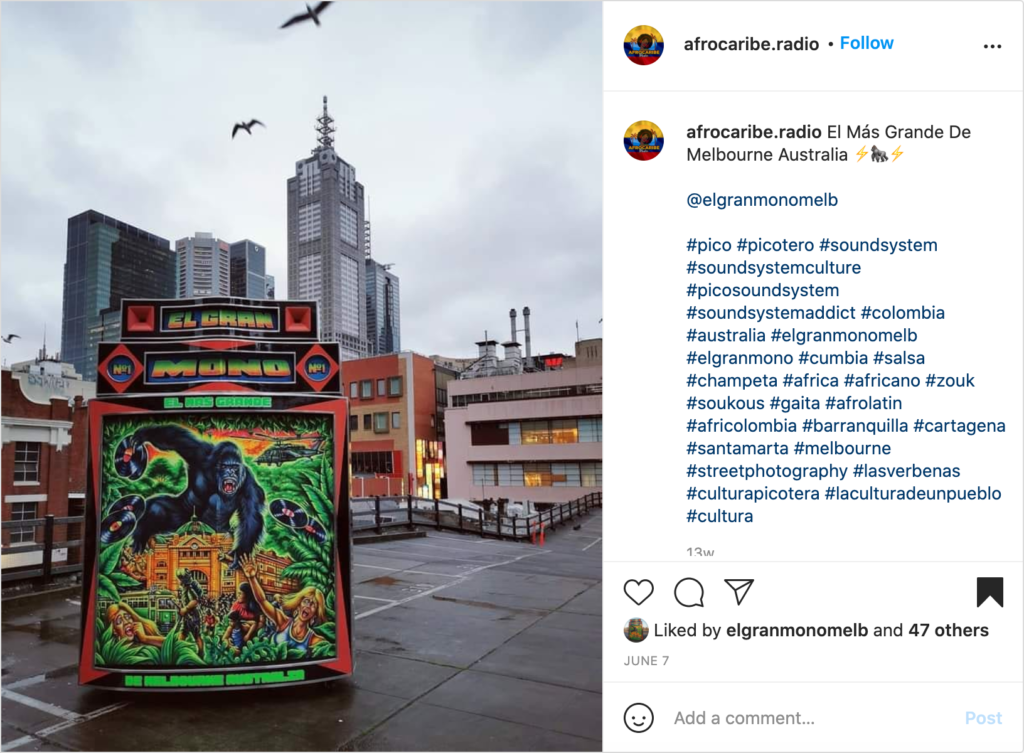
Often, sound systems are presented against a backdrop of cityscapes or scenic natural landscapes that situate their broader place-based context.
As discussed in prior work undertaken by SST members and affiliates, the orientation to this social media ethnography hinges on the conceptual framework of practice-as-research (1). As such, practitioners of sound system cultures, as well as aficionados, followers and amateur archivists who document the individual scenes are considered knowledge producers and are key components of the constitutions of each sound system and their associated scenes.
Outlined below are some ways that such methods by which we are currently looking at Instagram as a source of material to investigate the visual cultures of global sonic street technologies.
Hashtag ethnography
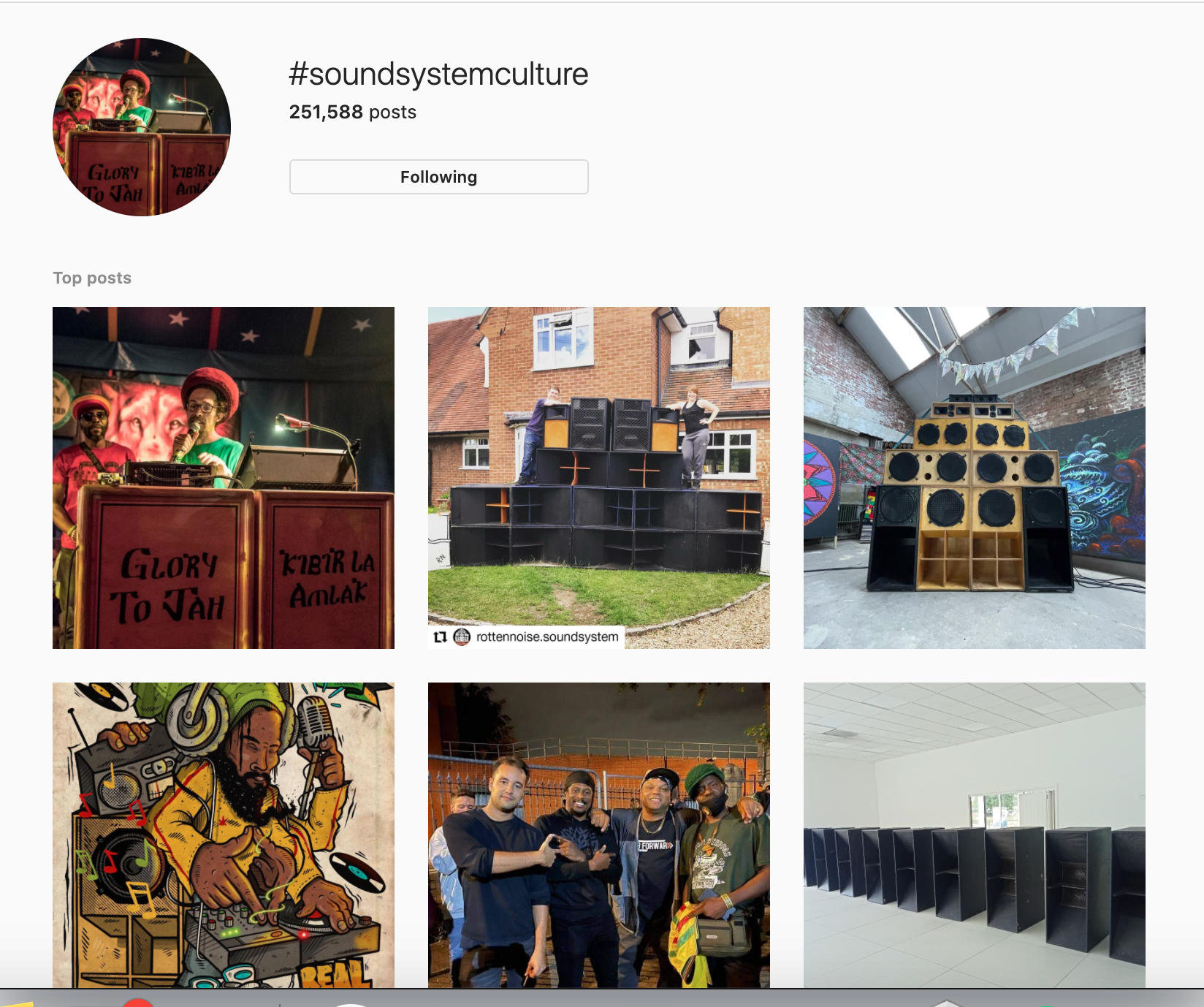
The hashtag #soundsystemcultures showcases diverse set of images that illustrate an eclectic selection of ways that people visually engage with sound system cultures online
Researchers have previously documented the process of using hashtags to identify the visual culture of specific social groups, as well as crowdsourcing research material through the use of hashtags. Hashtag ethnography can be used in Instagram in two major ways; firstly, as a tool for identifying pertinent audiences and their visual cultural motifs and ways of relating, and secondly, as a tool to engage with the communities of interest and contribute to the evolving social media ecosystem. Initially in our project, we identified a list of relevant hashtags used by sound system operators who are active on Instagram. By following these hashtags and accounts associated with them we were able to grow the data sets to reflect the multiplicity of global sonic street technologies.
When considering hashtags associated with sound system cultures, certain search terms and hashtags yield the highest number of results that create an accessible portal into the ways that artists, aficionados, and practitioners engage with their online audiences. The intentionality behind using hashtags with accompanying images also show that they become nodes for audience engagement and further proliferation of information about individual sound systems, events, and ongoing conversations.
Public/digital ethnography
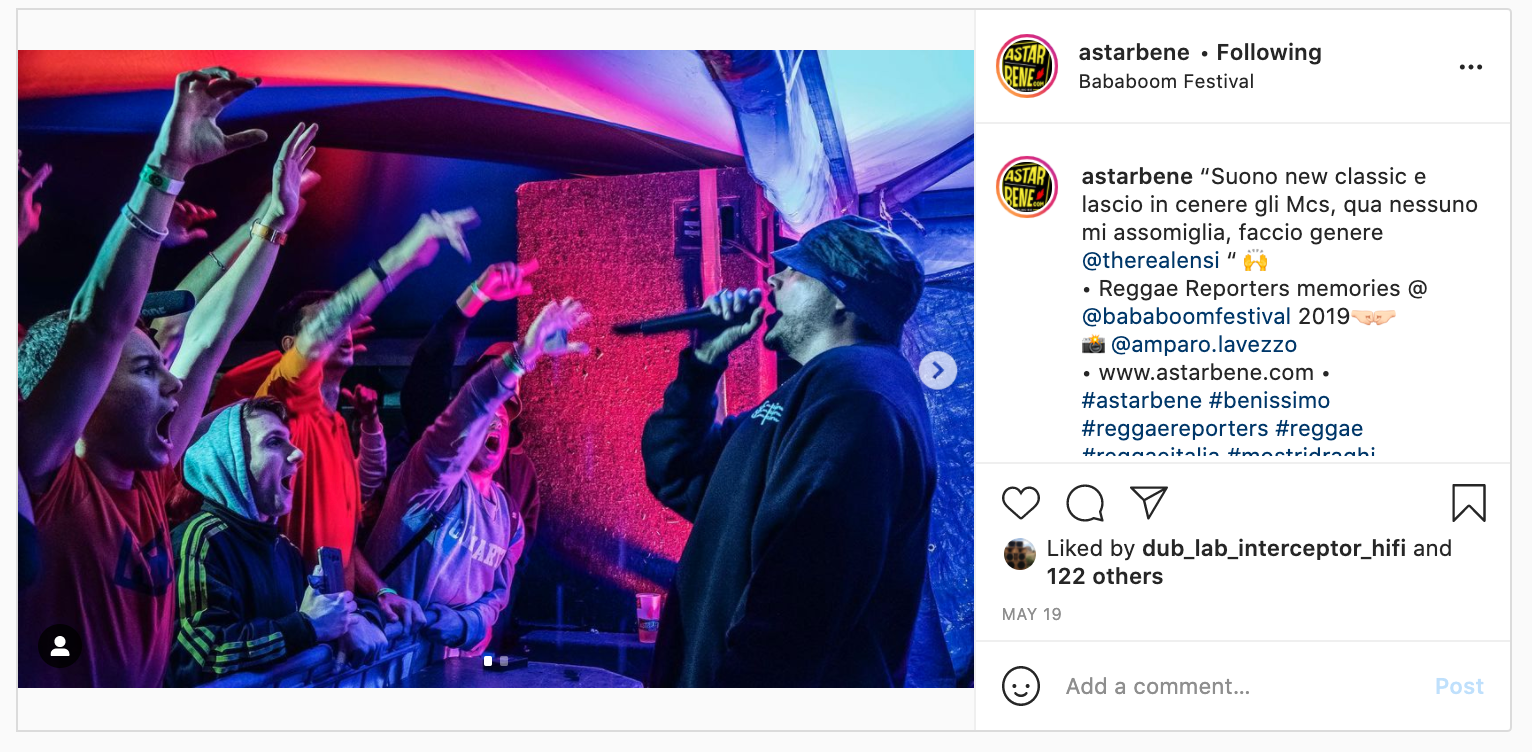
Astarbene is a Rome-based media collective that engages with and produces content for Italian reggae, dancehall and dub scenes.
Increasingly, anthropologists and other ethnographers are turning to the use of social media applications to document their ethnographic process [2]. Accordingly, the social media platform itself becomes a place for field work. As our own research progresses, we may also be able to use Instagram to document this journey, which in turn co-produces new material for the cultures we are studying.
As MacDowall and de Souza have noted in their study of street art, Instagram engagement can transform the material practices that undergird artistic communities [3]. Similarly, as we observe the growth of our own social media engagement our Instagram engagement, we may begin to see how our own research trajectories and questions become influenced by the Instagram community, and how our research shapes the sound system communities at large.
Considering how social media use itself shapes sound system cultures and communities, some social media-based sound system aficionados and practitioners are of particular interest. Astarbene, a Rome-based media collective, has amassed a vast archive of audio-visual material through their coverage of various reggae, dancehall and dub events throughout Italy. Their social media presence generates and inspires new forms of collaboration, assembly, and cultural production.
These are some of the ways that ethnographic elements can be embedded into our social media practices and thereby, become part of our research design. The STS conception of co-production, and more abstractly, intra-action becomes relevant here throughout the research process.
Fluid boundaries between online-offline worlds
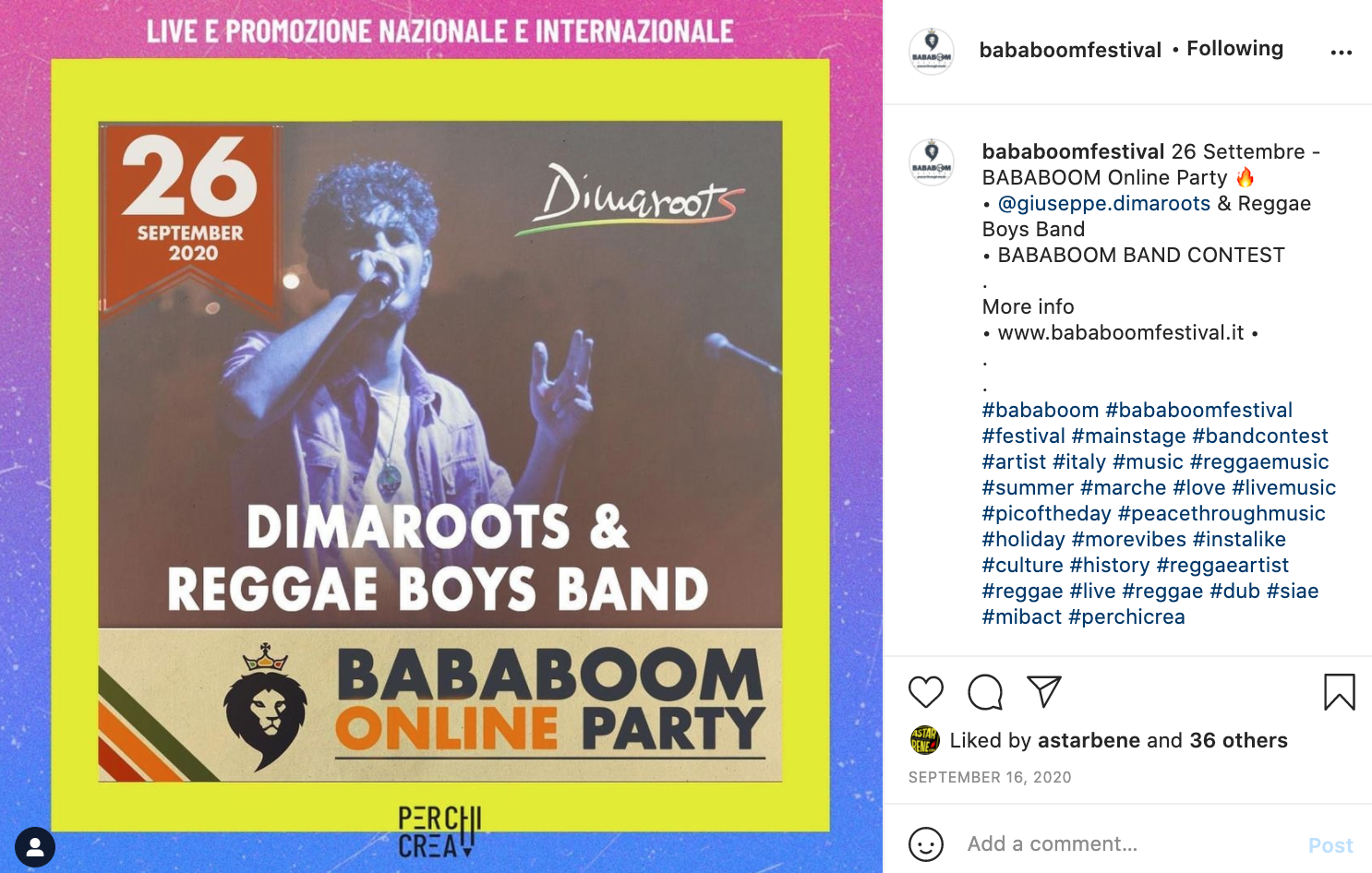
In 2020, as in-person activities were cancelled due to the COVID-19 pandemic in Italy, Bababoom Festival organized a number of online performances in lieu of their usual programming to sustain their engagement with their audience by using social media.
The fluidity in boundaries and the inherent and simultaneous multi-sitedness and non-sitedness of social media ethnography has been already documented [4]. Given this dynamism being inherent to the nature of social media ethnography [5], it can inform additional research questions about the flux in the development of not only of the SSTs being studied in particular, but also how the communities of interest interact with online platforms to facilitate real life events. Some specific research questions into this area may be helpful in mapping out the trajectory of this research. Mainly, it is important to consider the parallels between the online worlds of social media (whether Instagram or Facebook) that are in relationship to changing forms, styles and uses of sonic street technologies.
The permeability and fluidity between offline and online worlds are of particular interest in social media research in other arenas as well. In recent years, there has been a considerable focus on the economics of cryptocurrency, their legal and infrastructural dimensions and how they shape consumer and investor behaviours, both in online cryptocurrency markets as well as “real world” established stock markets [6]. Similarly, in another sphere, during the COVID-19 pandemic, there was a rise in virtual meeting spaces and exhibitions in the arts, academia and museums and heritage sectors as in-person spaces traditionally reserved for such activities became out of bounds [7]. Sound system cultures often face parallel and overlapping circumstances, in both the pre-pandemic context and in the aftermath of the COVID-19 pandemic. Thus, by observing the patterns observed in other hybrid offline-online spaces, we can situate similar phenomenon in the ways that practitioners and other actors navigate their changing relationships to in-person activities.
Migration research and SSTs
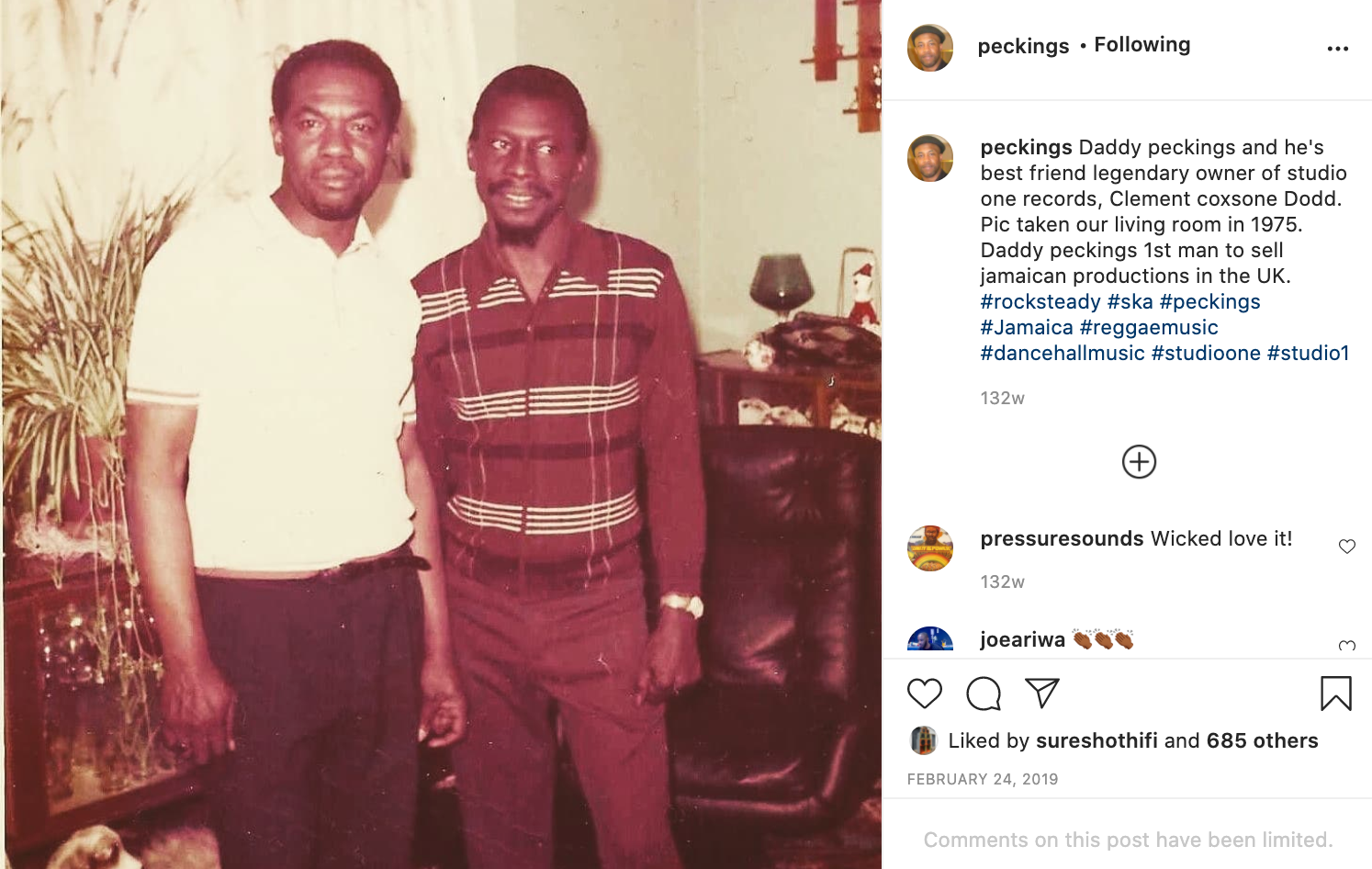
Much of the UK’s reggae scene was initiated by Jamaican migrants who went on to create much of infrastructure and establishments that cement today’s sound systems communities. Some practitioners document these migratory origins on their social media accounts.
One of the more contentious yet potent uses of social media in research has been to study migration of people across international borders [8]. Since by nature, the SSTs have a trajectory that mirror their movement from communities of origins across the global south and into the global north, there are implications in using social media to also track the migratory activities of such communities. In the aftermath of the migration crisis of the 2010s, some STS researchers have focused their work on how migrants use digital technologies and document their travels from areas of conflict to countries, mostly in Europe and North America, where they claim asylum. Further research and consideration needs to be conducted in order to understand the ways that SSTs also travel with vulnerable migrant communities across international borders, and how such perilous journeys are documented on platforms such as Facebook and Instagram.
In the case of sound system cultures, much of the global influence originates from countries in the global south who transported their culture and technologies to metropoles in the global north. Many sound system operators, practitioners and aficianados on social media often showcase archival material that illustrate the material and cultural impacts of these migrations.
The role of algorithms
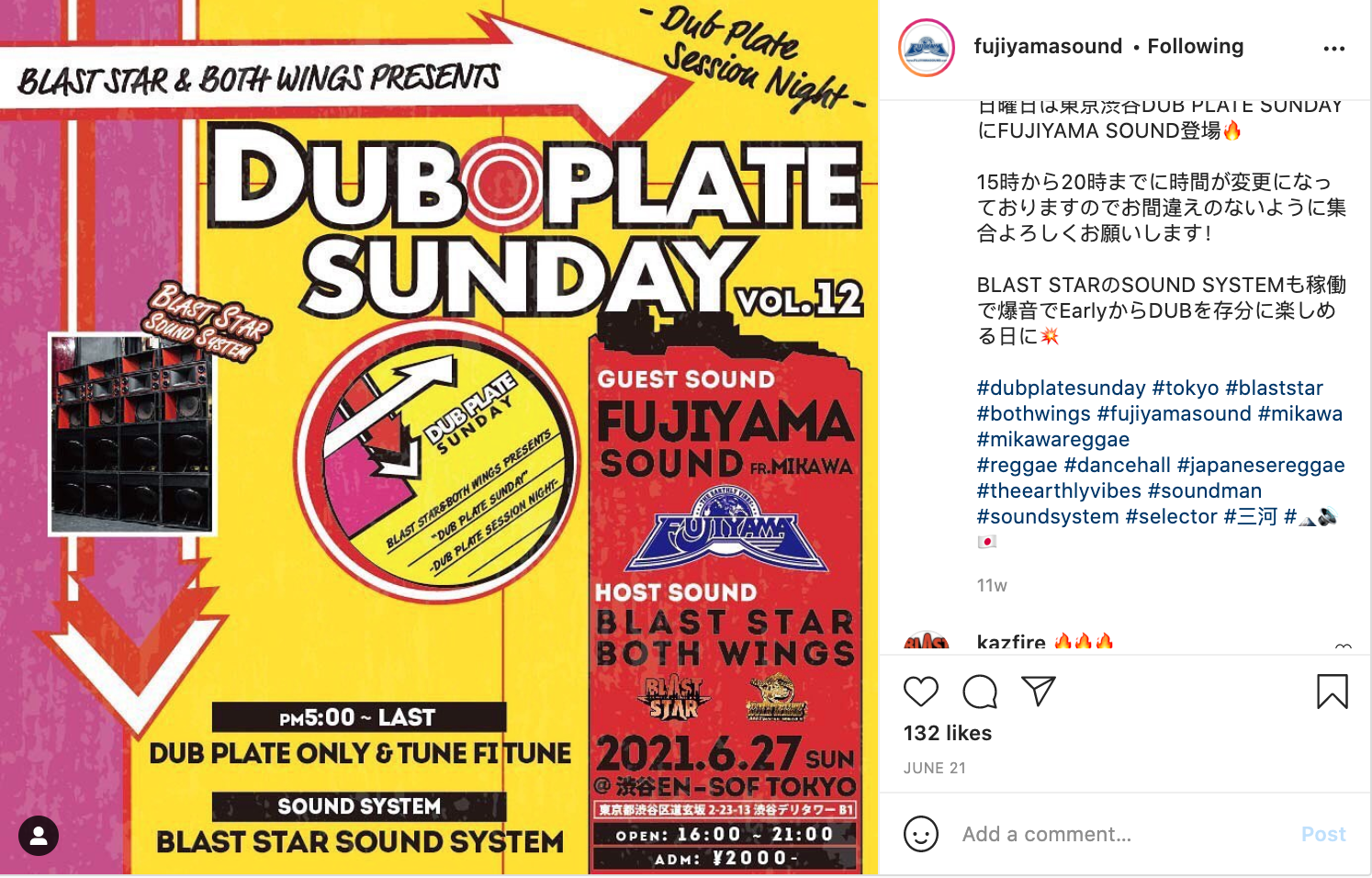
While not one of the more visible players among sound system accounts on Instagram, Fujiyama Sound, a Japan-based sound system was found through reliance on Instagram’s algorithms, in tandem with the use of the hashtag #soundsystem
Currently, the SST project is undertaking an Instagram-based ethnography of sonic street technologies. This is undertaken by following hashtags and accounts associated with global and region-specific sound system cultures. One of the ways that the ethnographic data is sorted and collected is by relying on the algorithms that are embedded in the user interface of Instagram that promote similar and related content. The result is that a growing number of sound system-related content that were otherwise unknown to our research team is brought into our Instagram feeds through our iterative process of engagement.
At this moment, by engaging with Instagram in this way, we are observing a complex mosaic of sound system cultures and how they interact with other phenomenon in a local and global scale. The visual culture of sound systems that are made salient to us through this process is subject to further consideration. Certain thematic elements and trends are becoming tangible through this ongoing investigation, which will become the basis for future web-based and in-person, situated, participant ethnographic work. One of the best outcomes of relying on these algorithms is finding lesser known sound systems across the world.
References
[1] Brian D’Aquino, Julian Henriques, and Leonardo Vidigal, “A Popular Culture Research Methodology: Sound System Outernational,” Volume !. La Revue Des Musiques Populaires, no. 13 : 2 (April 21, 2017): 163–75.
[2] Samuel Gerald Collins et al., “Ethnographic Apps/Apps as Ethnography,” Anthropology Now 9, no. 1 (January 2, 2017): 102–18, https://doi.org/10.1080/19428200.2017.1291054.
[3] Lachlan John MacDowall and Poppy de Souza, “‘I’d Double Tap That!!’: Street Art, Graffiti, and Instagram Research,” Media, Culture & Society 40, no. 1 (January 1, 2018): 3–22, https://doi.org/10.1177/0163443717703793.
[4] Jordan Kraemer, “Doing Fieldwork, BRB: Locating the Field on and with Emerging Media.,” 2016, 113–31; Massimo Airoldi, “Ethnography and the Digital Fields of Social Media,” International Journal of Social Research Methodology 21, no. 6 (2018): 661–73.
[5] Steffen Dalsgaard, “The Ethnographic Use of Facebook in Everyday Life,” Anthropological Forum 26, no. 1 (2016): 96–114.
[6] Michael Abramowicz, “Cryptocurrency-Based Law,” Ariz. L. Rev. 58 (2016): 359; David LEE Kuo Chuen, Li Guo, and Yu Wang, “Cryptocurrency: A New Investment Opportunity?,” The Journal of Alternative Investments 20, no. 3 (2017): 16–40; Ryan Farell, “An Analysis of the Cryptocurrency Industry,” 2015; Garrick Hileman and Michel Rauchs, “Global Cryptocurrency Benchmarking Study,” Cambridge Centre for Alternative Finance 33 (2017): 33–113.
[7] Xiaodan Feng, “<? Covid19?> Curating and Exhibiting for the Pandemic: Participatory Virtual Art Practices During the COVID-19 Outbreak in China,” Social Media+ Society 6, no. 3 (2020): 2056305120948232; Sara Pascoal, Laura Tallone, and Marco Furtado, “The Impact of COVID-19 on Cultural Tourism: Virtual Exhibitions, Technology and Innovation,” in International Conference on Tourism, Technology and Systems (Springer, 2020), 177–85; Giuseppe Resta et al., “The Impact of Virtual Tours on Museum Exhibitions after the Onset of Covid-19 Restrictions: Visitor Engagement and Long-Term Perspectives,” SCIRES-IT-SCIentific RESearch and Information Technology 11, no. 1 (2021): 151–66; Casey Strickland et al., “Tika Tonu AD2020: Creating a Virtual Exhibition of Design Artwork in Response to the COVID-19,” in Link Symposium Abstracts 2020, 2020, 26–27.
[8] David Joseph Piacenti, Luis Balmore Rivas, and Josef Garrett, “Facebook Ethnography: The Poststructural Ontology of Transnational (Im) Migration Research,” International Journal of Qualitative Methods 13, no. 1 (2014): 224–36.
